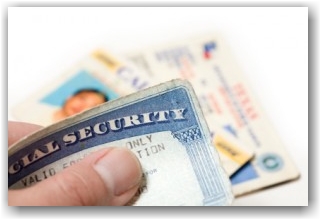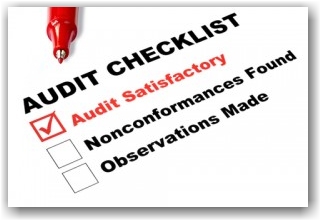As previously reported in our blog post and newsletter,on January 12, 2011, USCIS Director Alejandro Mayorkas released the revised version of the I-9 Employer Handbook known as the M-274. After reviewing the new release, the following is a summary of the additional guidance and answers to FAQs that we think you need to be aware of in order to continue to remain I-9 compliant as well as update your policies and procedures in relation to managing your I-9s.
Is this a perfect employer handbook? … No — but it is improved and does address many of the questions that we hear from employers in our practice; i.e, questions about name changes, conditional resident status, how to handle H-1B portability, clarifying the Thursday Rule for when the employer must complete Section 2 of the form, and assistance in how to calculate and determine the I-9 retention date for separated employees. So, let’s get started with the issues that produce the most questions:
Clarifying the Thursday Rule (Page 3) The Handbook states that employers must review the employee’s documents and complete Section 2 of the form within 3 business days of the first day of work for pay, but not including the actual date of hire – or, Thursday if the employee begins work on Monday.
Clarifying Conditional Residency (Page 9) Permanent Resident Cards with either an expiration (Conditional Cards) date or no expiration date are List A documents that should not be re-verified. An example of the new Form I-551 Permanent Resident Card that was issued May 11, 2010 has been included in the examples of “reasonable” authorization documents
Name Changes (page 18) An employer is not required to update the I-9 form when an employee changes their name, but may do so in Section 3. The new Q&A section instructs that employers may accept a document with a different name than what is entered in Section 1 (due to married names, compound names, or misspellings) if the documentation presented by the employee reasonably relates to the employee and appears genuine. USCIS further suggests that if the employer is not satisfied that the presented documents appear genuine and relate to the individual, to request additional documentation to assist in making the determination. The employer may wish to attach a brief memo to the I-9 detailing the employee’s reason for the name discrepancy, including copies of any supporting documentation the employee chooses to provide; this is referenced on pages 41-42. There is a reminder for government contractors required to comply with FAR E-Verify that a name change in the system triggers the completion of a new I-9 form under the FAR rule.
Interruptions in Employment (Page 20) The Handbook now provides guidance to employers about whether a new I-9 form is required after an employee has had a brief interruption in employment. The Handbook provides examples of continuing employmentsituations such as maternity or paternity leave, leaves of absence, transferring from one business unit to another unit for the same employer, changing jobsite locations with the same employer. An employer is not required to fill out a new I-9 form in these situations where there is an expectation of continued employment.
The Temporary Employment Authorization Tablehas been replaced instead with narrative content for refugees and asylees, employees in TPS status (Temporary Protected Status), exchange visitors (J visas), students (F and M visas), H-1B professionals and H-2A agricultural workers. More on this below.
H-1B Employees Changing Employers (a/k/a “Portability” or an H-1B Transfer) – Page 17 The Handbook restores the ability to “port or transfer” and start working immediately for an employee in valid H-1B status who changes to a new employer upon filing an H-1B petition with USCIS. The prior 2009 version of the Handbook required the porting H-1B employee t o obtain a Form I-797 receipt notice from USCIS prior to starting employment. One of the benefits of H-1B portability is that the employee can start right away, so it’s good to see them finally get this right as it applies to the Form I-9. Further guidance states that the H-1B employee’s Form I-94/I-94A issued for employment with the previous employer, with the foreign passport, would qualify as List A documents. You should write “AC-21” and record the date you submitted the I-129 Petition to USCIS in the margin of the I-9 form next to Section 2.
Page 18 further states that “you should” retain the following documents with the Form I-9 to show that you filed for an extension of stay: 1) A copy of the new Form I-129; 2) Proof of payment for filing a new Form I-129; and 3) Evidence that you mailed the new I-129 petition to USCIS. No further guidance has been provided on when or if to re-verify the H-1B petition after it’s approved. We recommend that you calendar re-verification of H-1B status based upon the dates provided on the I-797 USCIS approval notice.
Extensions of Status (Page 17-18) Guidance states that an employee with a petition for extension of status, timely filed before work authorization expires, are eligible for continued employment for up to 240 days beyond the expiration date of the authorization as long as the extension remains pending. Details are provided for how to complete the I-9 and the documentation to be attached for those in E-1, E-1, H-1B, H-2B, H-3, L-1, O-1, O-2, P-1, P-2, P-3, Q-1, R-1 and TN classification who have timely filed extensions with the same employer.
For H-1B extensions, the employer should write “240-Day Ext” and record the date the employer submitted the I-129 Petition Extension to USCIS in the margin of the I-9form next to Section 2 (Page 17). Further guidance is provided as to what documentation should now be attached to the I-9 form, as follows:
- A copy of the Form I-129 that was filed
- Proof of payment
- Evidence that the new I-129 Petition was mailed to USCIS
- After the extension is filed, USCIS will issue a receipt notice (Form I-797C) which should also then be added and retained with the I-9
Upon approval of the case, the employer should record in Section 3 the document title, number and expiration date listed. The Handbook further states that the employer must give to the employee the Form I-94A attached at the bottom of the approval notice, which is evidence of the employee’s nonimmigrant status.
J-1 Exchange Visitors and M-1 and F-1 Students Changing to H-1B Status (“The Cap Gap”) – Pages 11-13 This section now includes details on how to complete Section 2 and confirms that the student’s employment authorization will remain valid through September 30th of the calendar year for which the H-1B is filed, so long as the student’s H-1B status will begin on October 1st. The Handbook also informs that an employer must re-verify a student’s Form I-20. The Form I-20 must show that the cap-gap extension was endorsed by the student’s designated school official. Re-verification must be done no later than October 1st.
I-9 Retention Calculator (Page 23) The Handbook now includes an IRS retention calculator to help employers determine the retention date for terminated or separated employee I-9s.
Electronic Retention of the I-9 Form and Documentation of Electronic Storage Systems – What’s New? (Page 24) The Handbook expands guidance to employers that use paper, electronic systems or a combination of paper and electronic. Employers must follow particular guidelines should they choose to retain their I-9s in an electronic storage system. Employers who are currently using an electronic retention system or contemplating the future use of an electronic retention system should review the information outlined in the Handbook and consult with their immigration or attorney.
Employees with Temporary Protected Status (TPS)…Page 10 The Department of Homeland Security (DHS) may extend a country’s TPS designation by issuing a Federal Register notice that automatically extends expiring Employment Authorization. A TPS employee may choose to present an Employment Authorization Document (EAD card) that is expired so long as it has been automatically extended.
So, how do you determine if the TPS EAD card is a valid List A document? There is now guidance on how to determine whether DHS has issued an automatic extension of expiring EADs, and how to explain that the status has been extended, as well as sample images of an EAD card that has been issued. There is additional guidance on how to re-verify refugees and asylees.
Federal Contractors (Page 19) The new Handbook provides additional guidance to Federal Contractors about their responsibilities under the amended FAR related to employment eligibility verification and states that the regulation requires contractors with a federal contract that contains the FAR E-Verify clause to use E-Verify for their new hires and all employees (existing and new) assigned to the contract. Additionally, guidance is provided that where an employee working for a FAR employer undergoes a name change and the employer chooses to verify existing employees by updating existing I-9s, and then a new I-9 form must be completed.
Check out the new Q&A section on pages 37-49
For questions pertaining to the revised Handbook and how to implement the new guidance into your current I-9 policies and procedures, please contact our office.
:::::::::::::::::::::::::
For an overview of our employer compliance services and solutions
For an overview of our I-9 Compliance Training
Take our I-9 Survey






